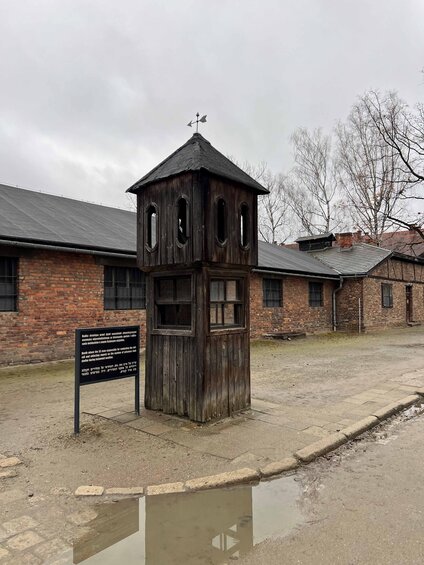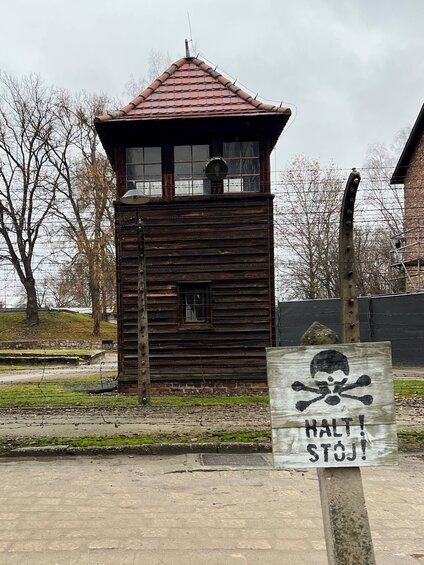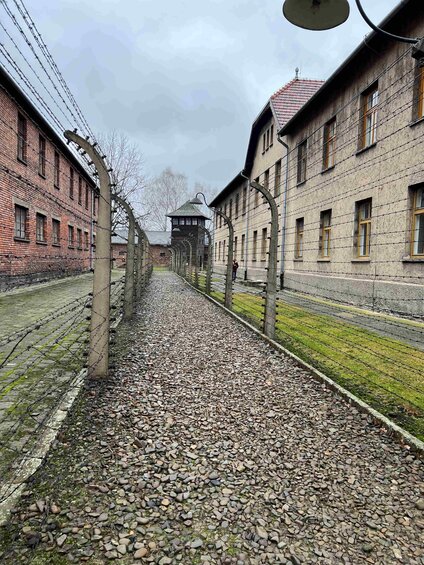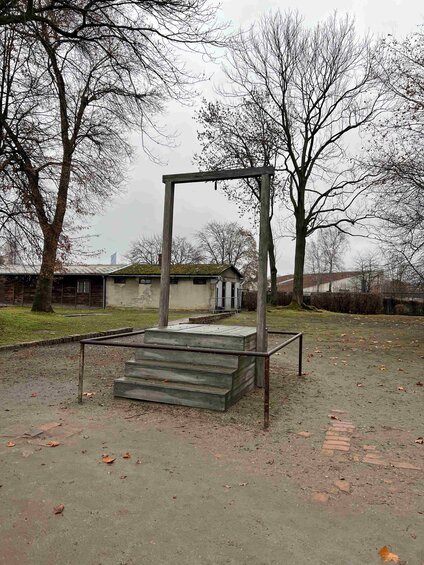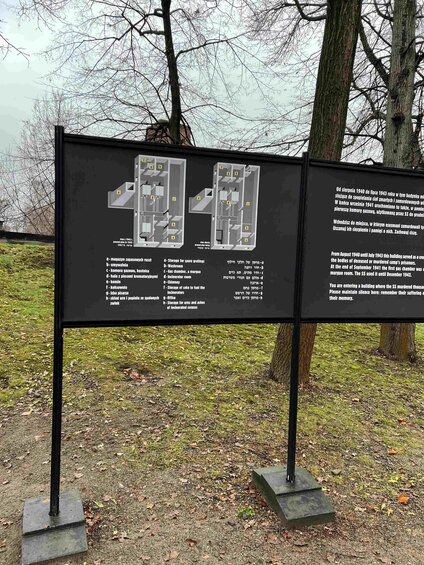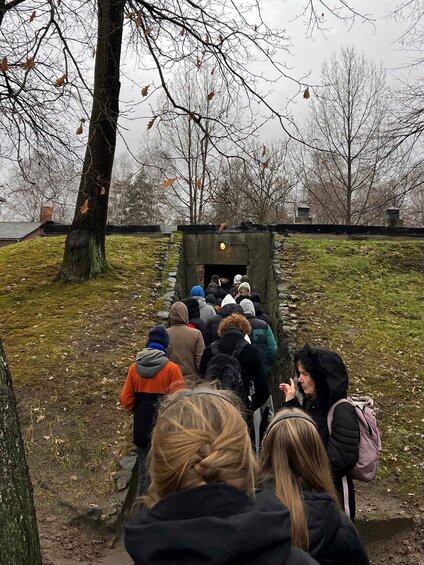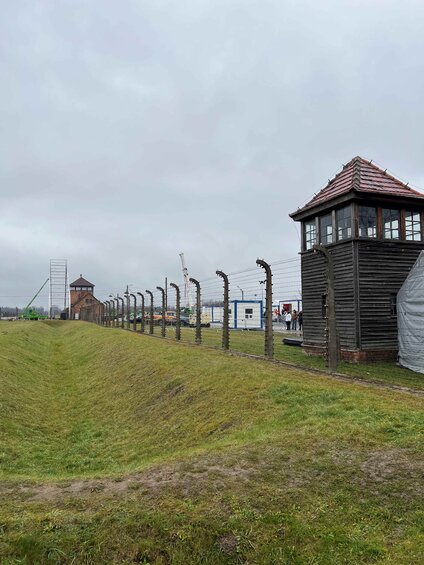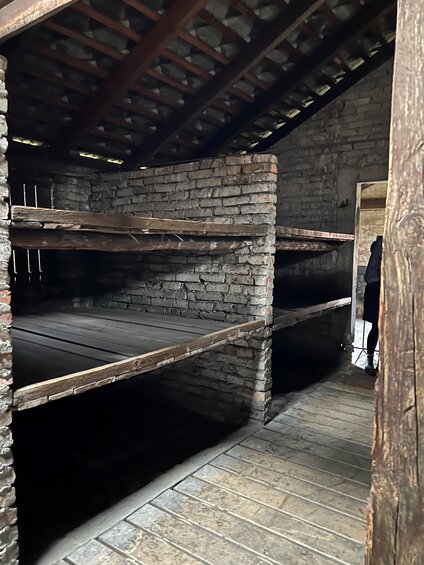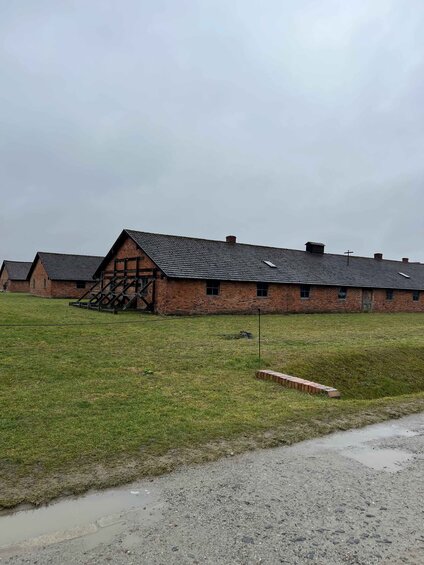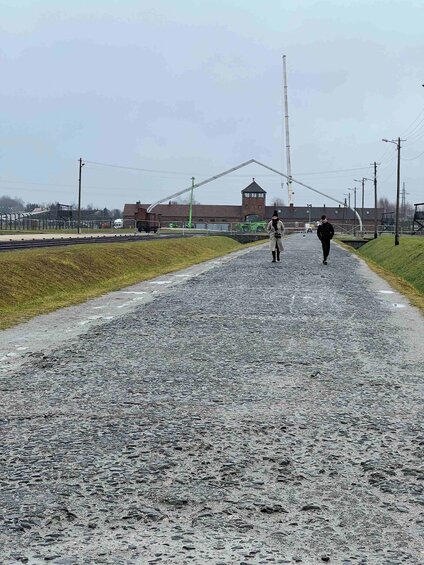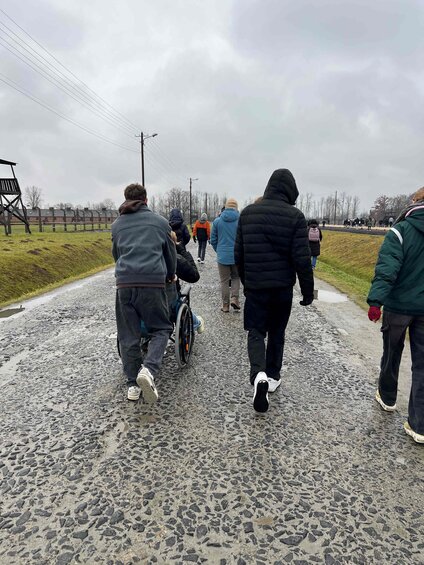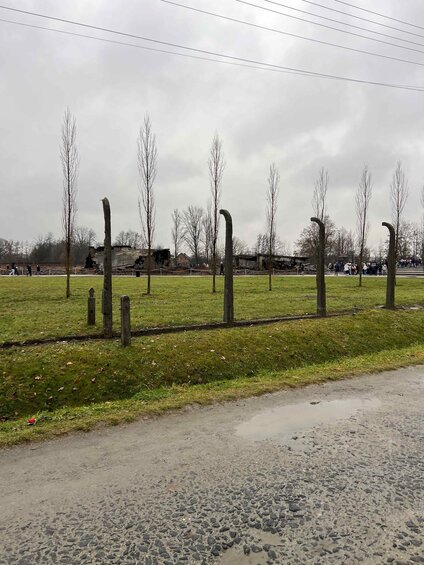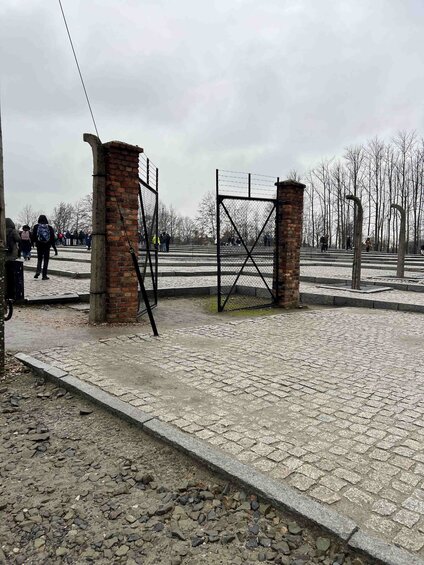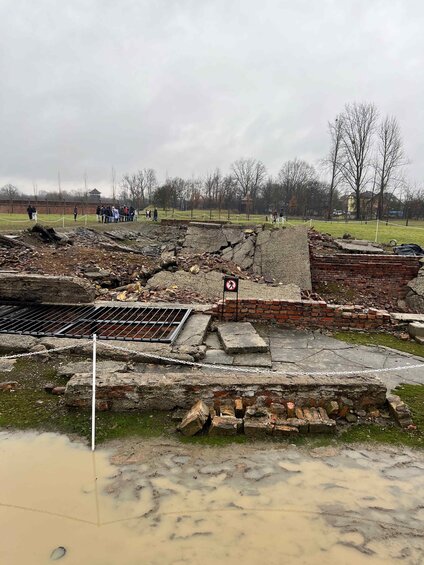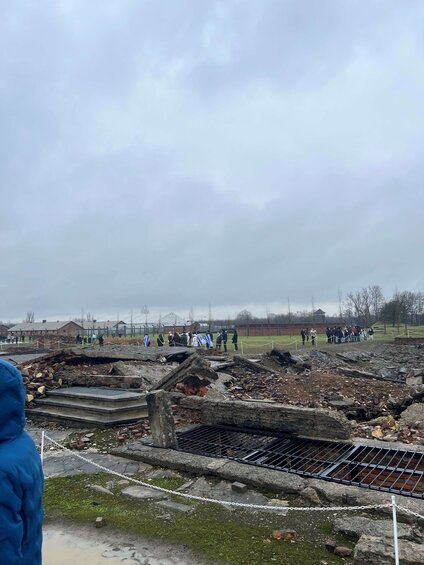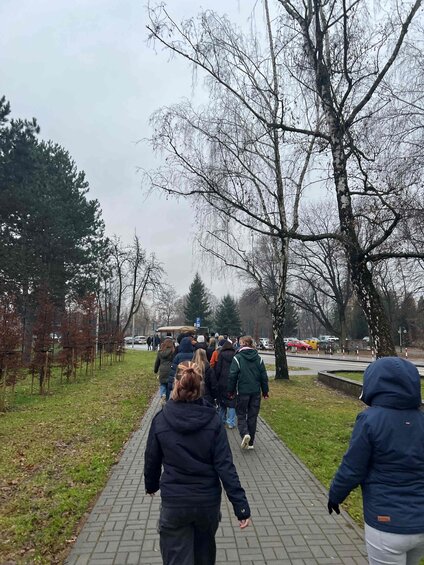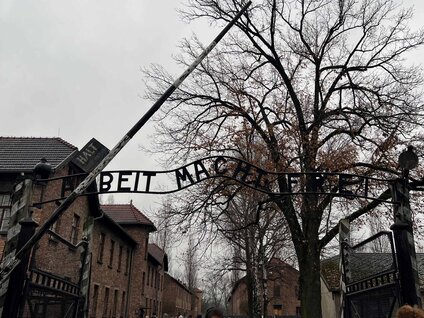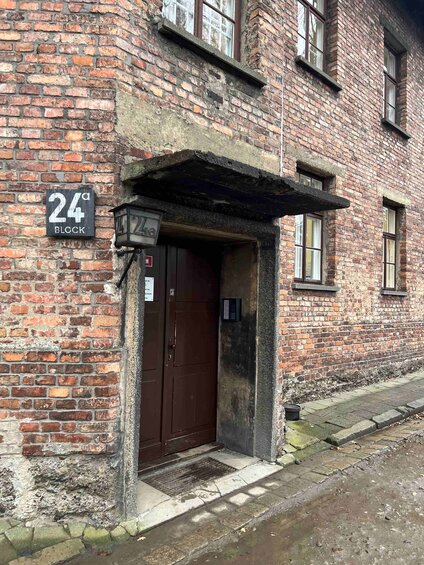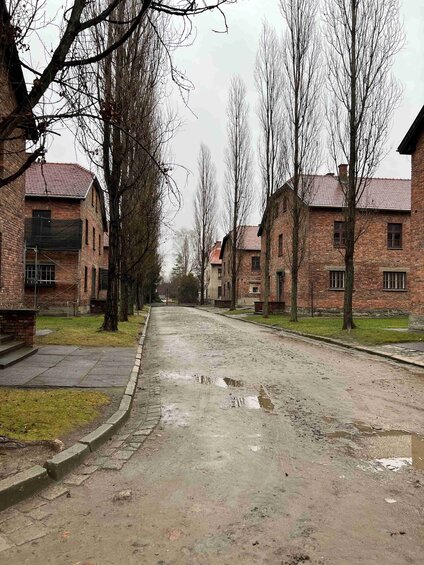Excursion to Auschwitz - December 2024
From 09.12.24 to 10.12.24, we, classes 10.1, 10.2 and 10.3 of the Joliot-Curie-Gymnasium, traveled by bus to the IJBS - International Youth Meeting Center Oświęcim. We visited the former Auschwitz-Birkenau concentration camp to take a closer look at the darkest chapter in German history.
The Auschwitz-Birkenau concentration camp was built by the National Socialists in the occupied Polish town of Oświęcim and became the central symbol of the Holocaust and the crimes of the Third Reich. Between 1940 and 1945, over 1.1 million people, mainly Jews, died in this extermination camp as a result of systematic murder, forced labor and inhumane living conditions. Today, it is open to visitors as a memorial site to commemorate the inhumane crimes caused by National Socialist ideology.
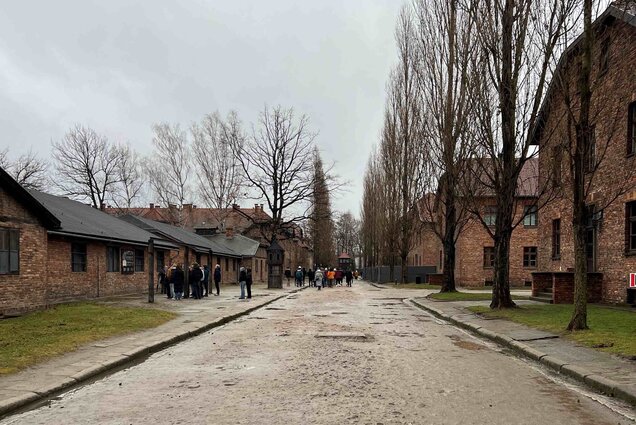
The journey began at 8 a.m. and we arrived at the IYMC at 2 p.m., where the staff gave us a friendly welcome and we had lunch. The hostel and rooms were modern and had everything we needed. The first item on the day's program was an introduction to the topic and preparation for the visit to the concentration camp. We learned about the history of the building and important facts about the Holocaust. In group work, we went into more detail about our expectations and fears about the next day.
Our guided tour of the main camp began on 10.12.24. As soon as we entered the camp through the gate with the inscription "Arbeit macht frei" (work sets you free), the atmosphere was oppressive. The main camp is much smaller and was built for Polish political prisoners at the time. During the tour, we were shown the old barracks, yards and facilities.
We first visited Block 4, which was about the history and arrival of the prisoners. We saw an urn containing the ashes of the victims and many pictures.
We particularly remembered Block 5 with the remaining objects of the victims. We saw hair, shoes, glasses, suitcases, bags, dishes, prostheses and the poison Zyklon B, which was used to systematically kill the prisoners in gas chambers. This made us realize the extent of the deaths caused by the Holocaust.
Our tour continued in Block 11, where there were pictures of registered men and women. In the basement of the "bunker" there were several standing cells, also known as "dark cells". Prisoners who had committed camp crimes were placed in these cells. You could also see the furnishings of the dormitories and washrooms. When we went outside, we came across the "black wall", also known as the "death wall". This was where prisoners who had to undress were shot in the back of the head by members of the SS.
Finally, we visited the crematorium, which was in operation until July 1943 and was later converted into a gas chamber. In front of it we saw a gallows with which the former commandant of the Auschwitz concentration camp, Rudolf Höß, was executed. Numerous prisoners were murdered in the gas chamber using the pesticide Zyklon B. Zyklon B was a poisonous gas containing hydrogen cyanide, which caused people to suffocate after just a few breaths.
The main camp was a very terrible and overwhelming insight into German history and made this event more tangible for us.
Next, we took the bus to Auschwitz Birkenau, the largest German labor and extermination camp of the Nazi state. It was three kilometers away from the main camp and could be reached by train at the time. Hundreds of thousands of registered prisoners lived here in despicable conditions and were forced to perform forced labor. They died of starvation, serious illnesses, frostbite, physical exhaustion, medical experiments, executions and gassings. Josef Mengele carried out these medical experiments and focused on twin research. People slept in cramped conditions in wooden barracks, and there were hardly any, if any, washrooms and toilets.
We walked around the vast, barren area, which was characterized by the ruins of the crematoria and old accommodation. This left a lasting impression in our minds. The old train tracks, which were used to transport the prisoners to the extermination camp, were striking. Unfortunately, there were large construction sites that prevented us from seeing anything else.
After this exciting, but also exhausting day, we returned to the IYMC. In another group session, we discussed our impressions, feelings and thoughts about this interesting day. Finally, we watched a video of a contemporary witness to get an additional personal impression.
This concluded our historical excursion to Ausschwitz.
We are grateful for the organization of the trip and the new knowledge we were able to gain.
Text | Photos: Martha F. and Anna G., Year 10
